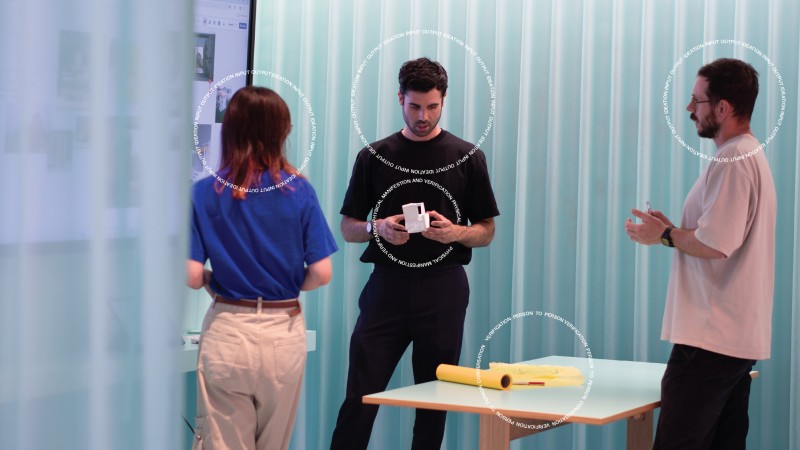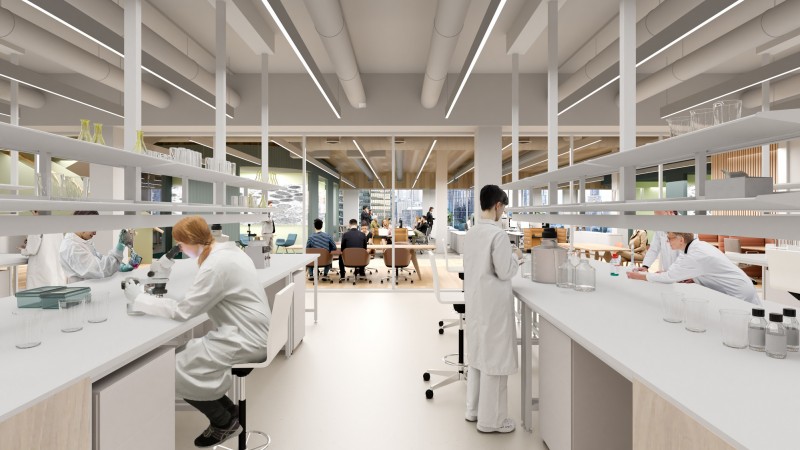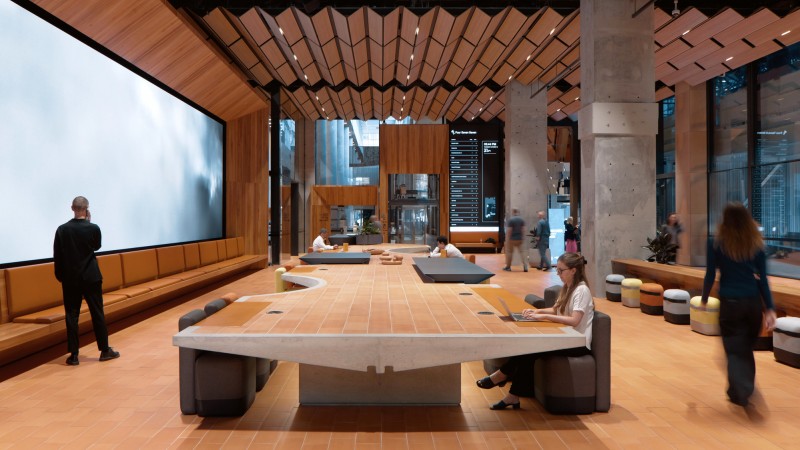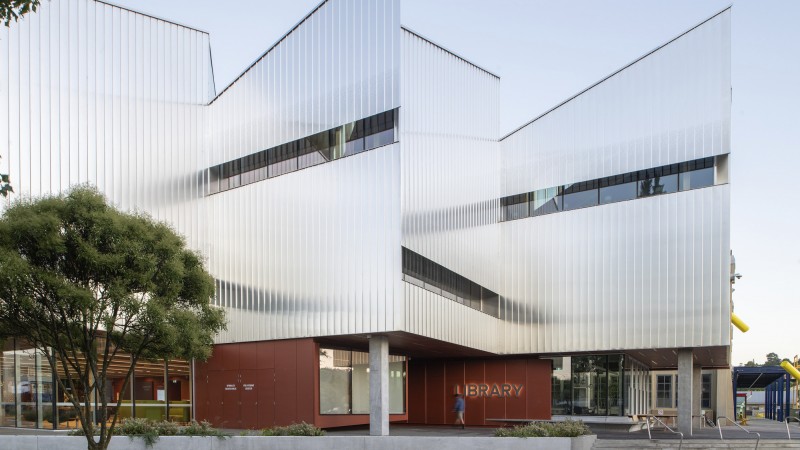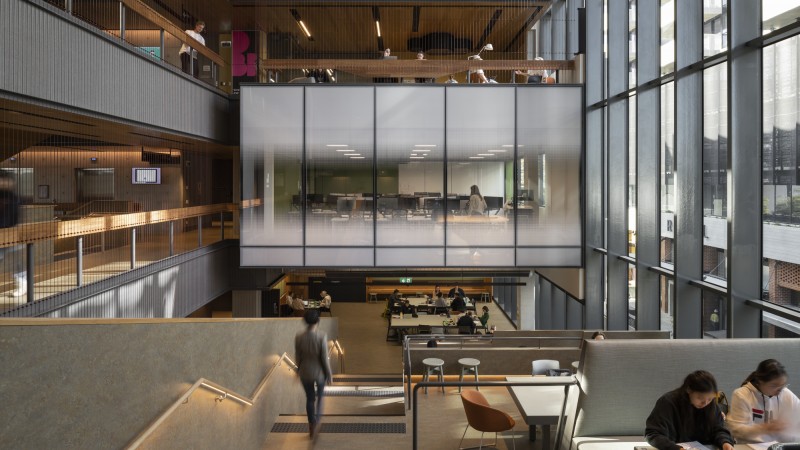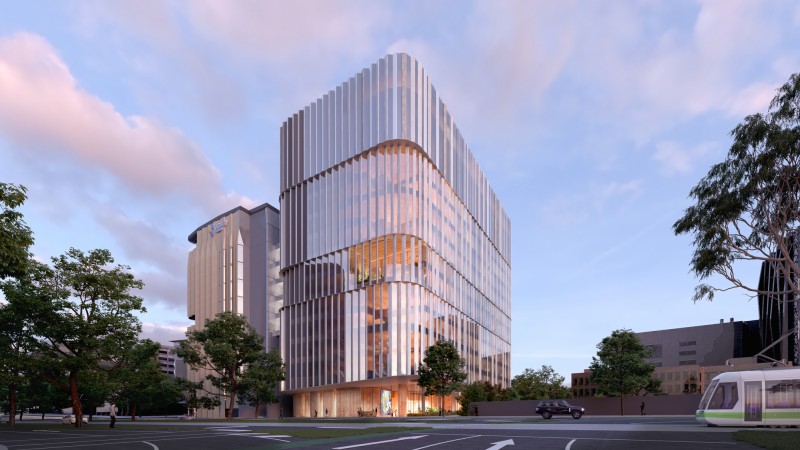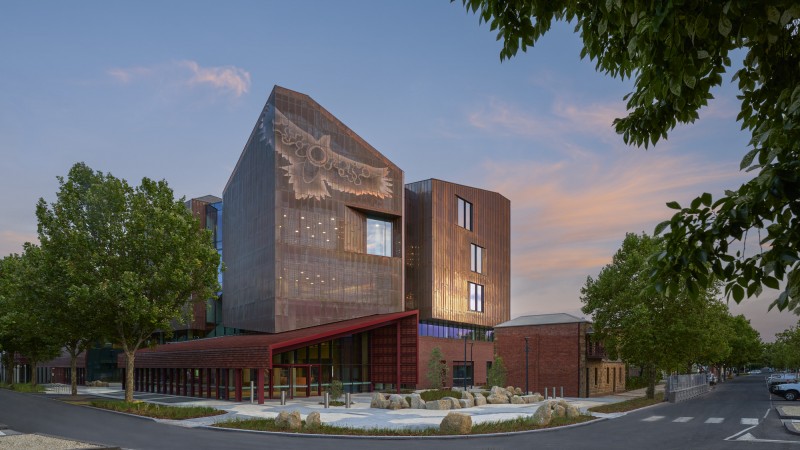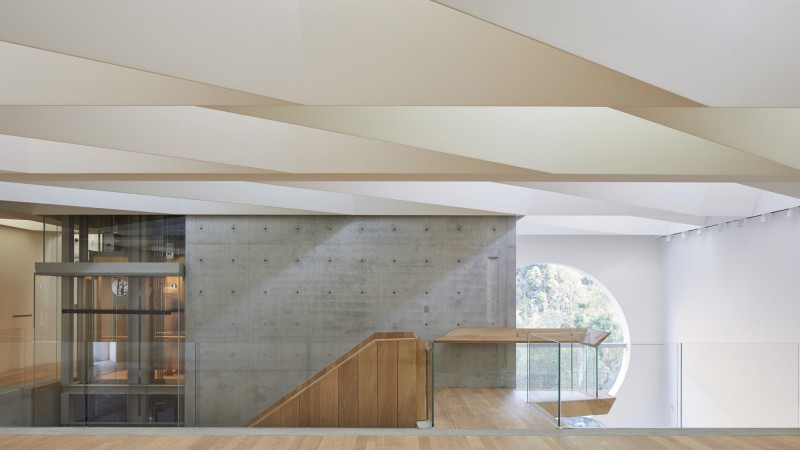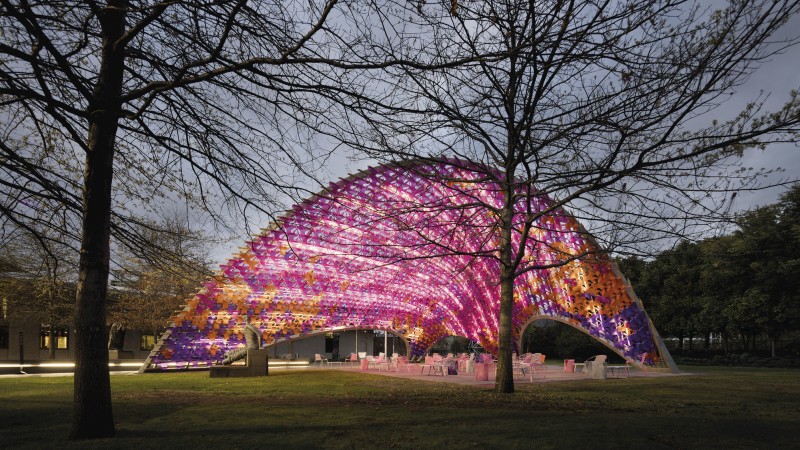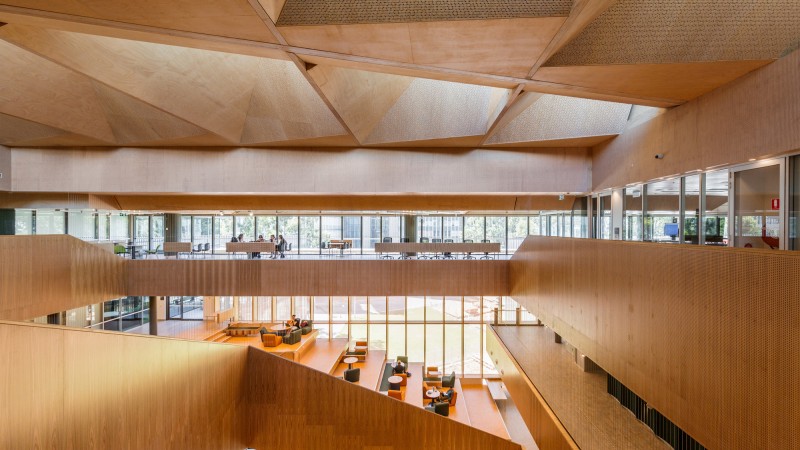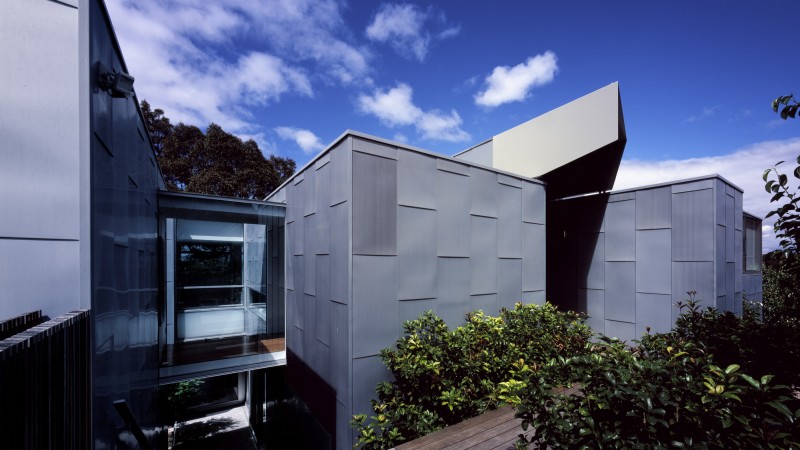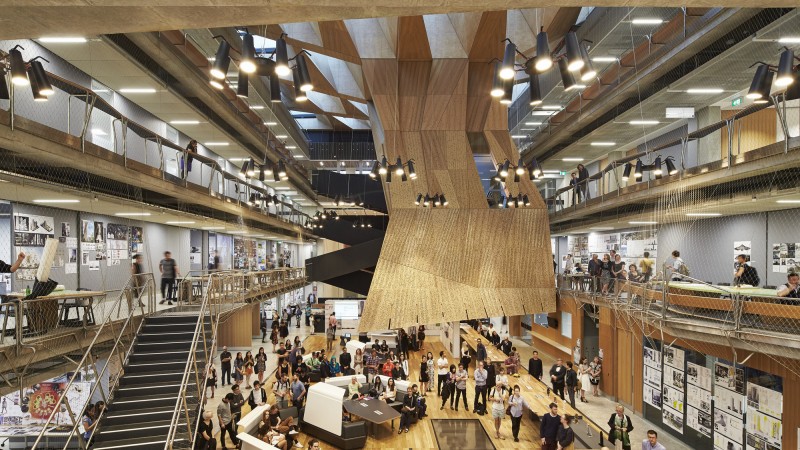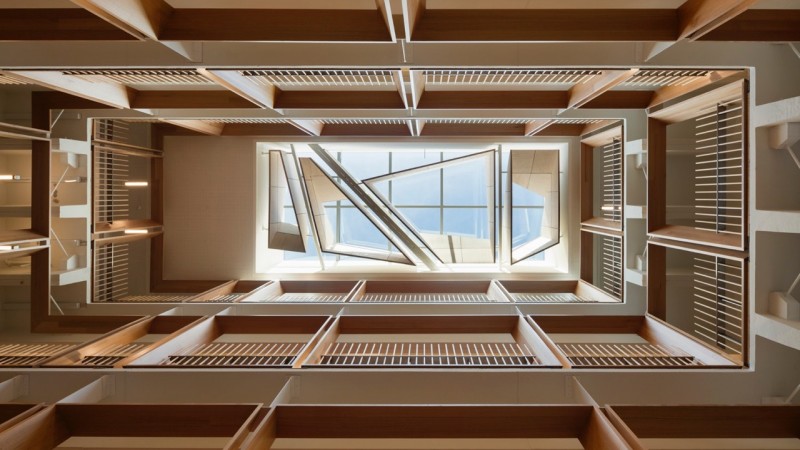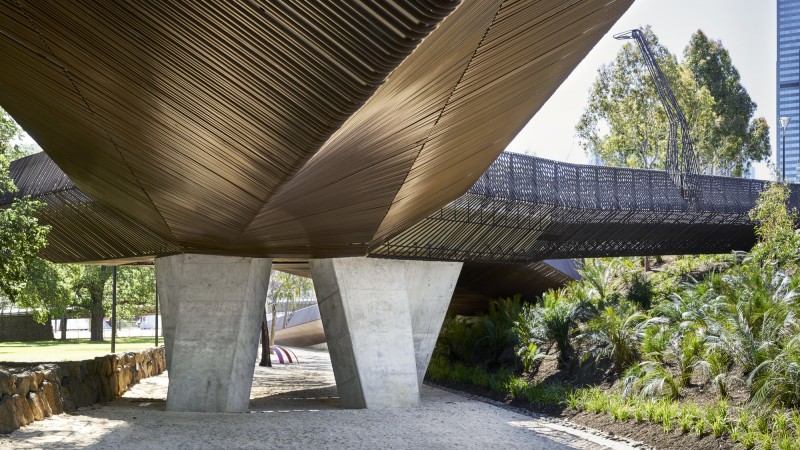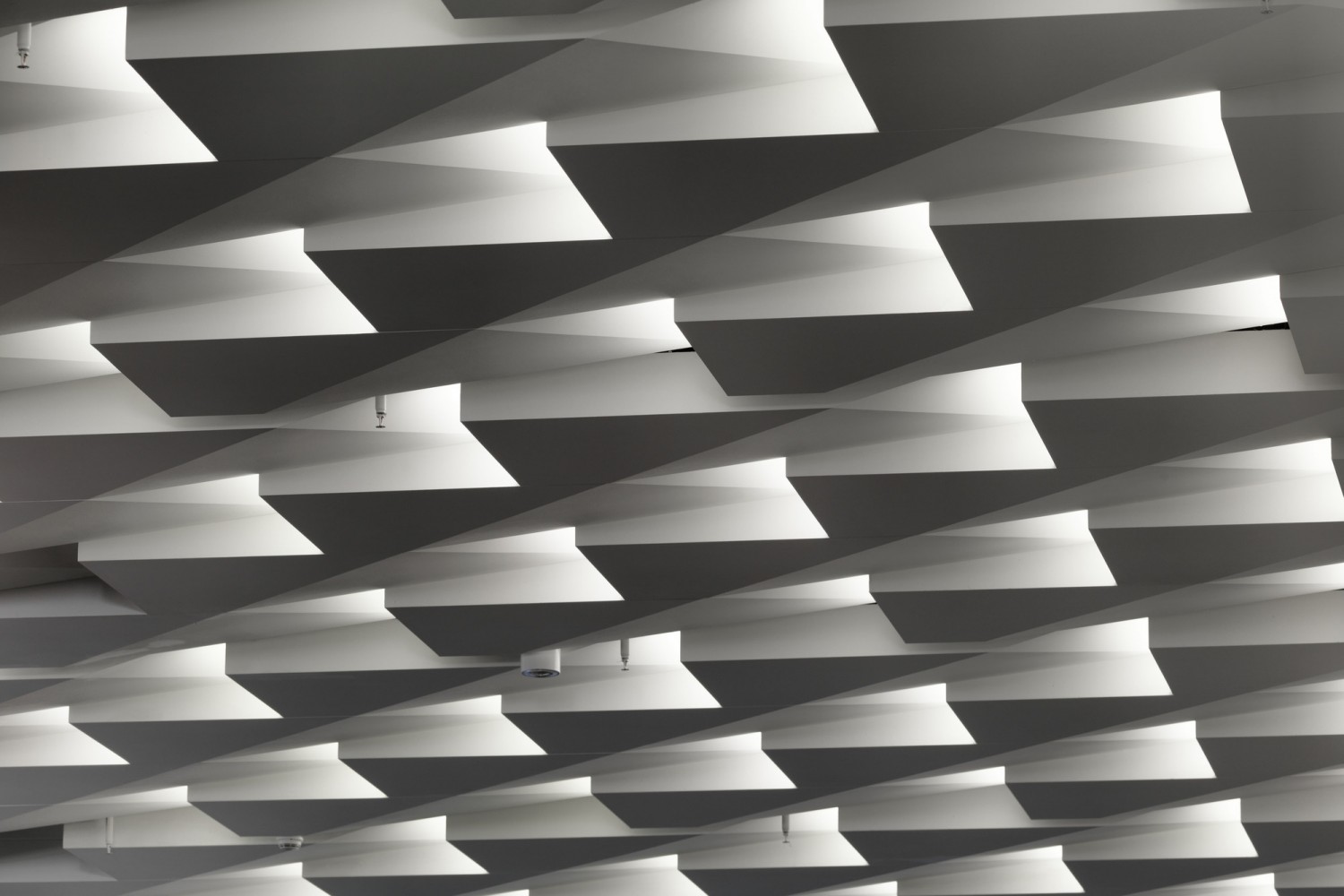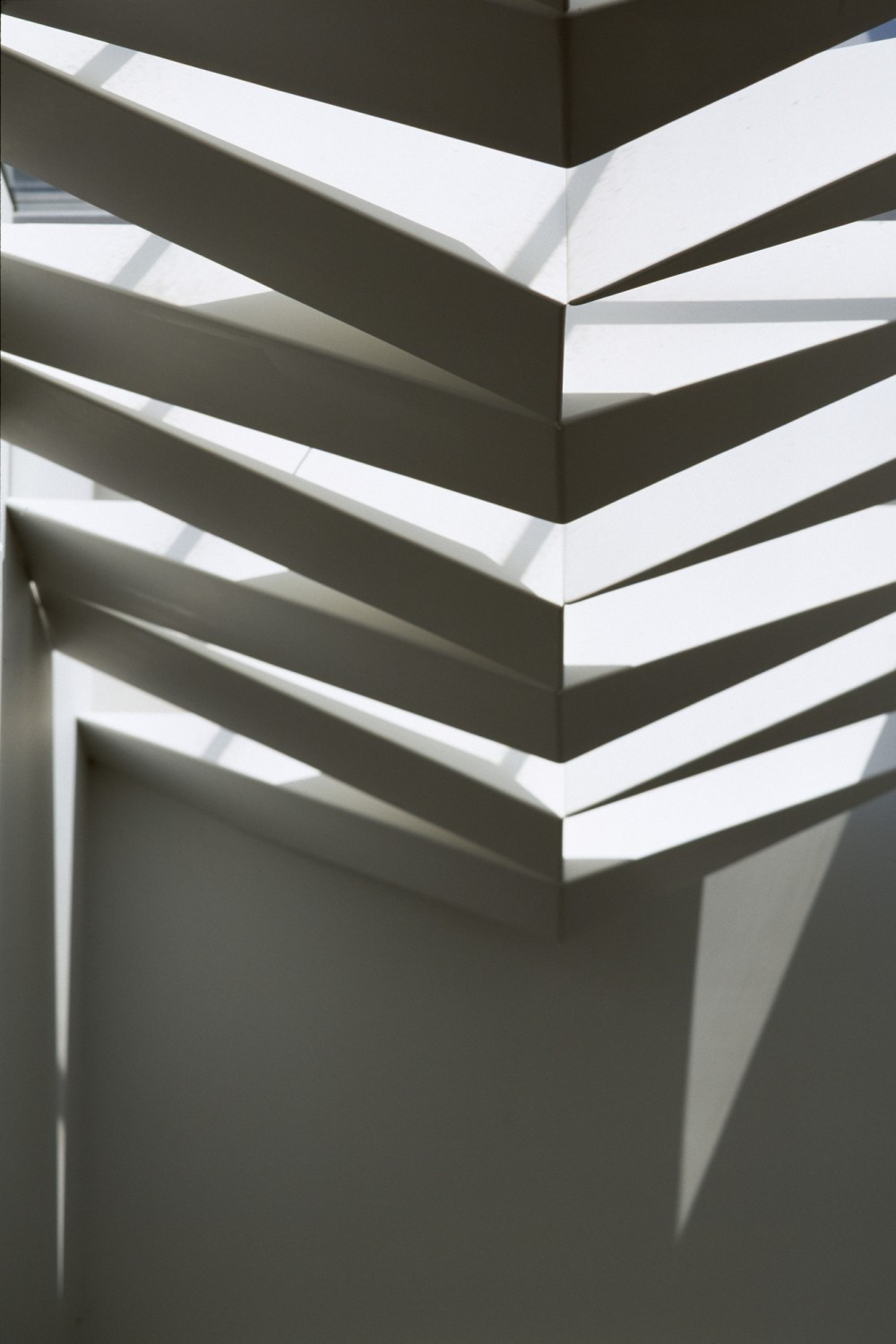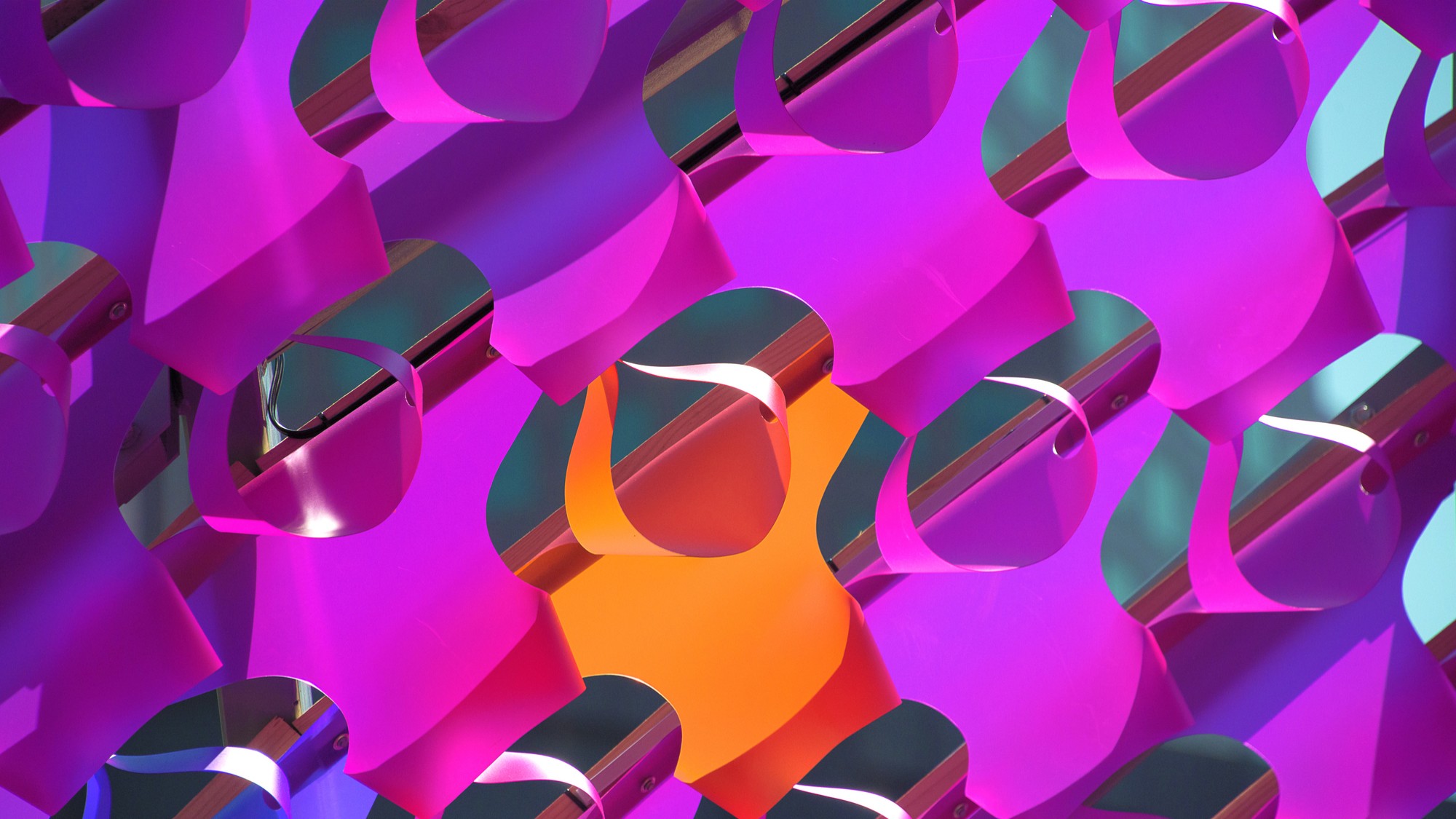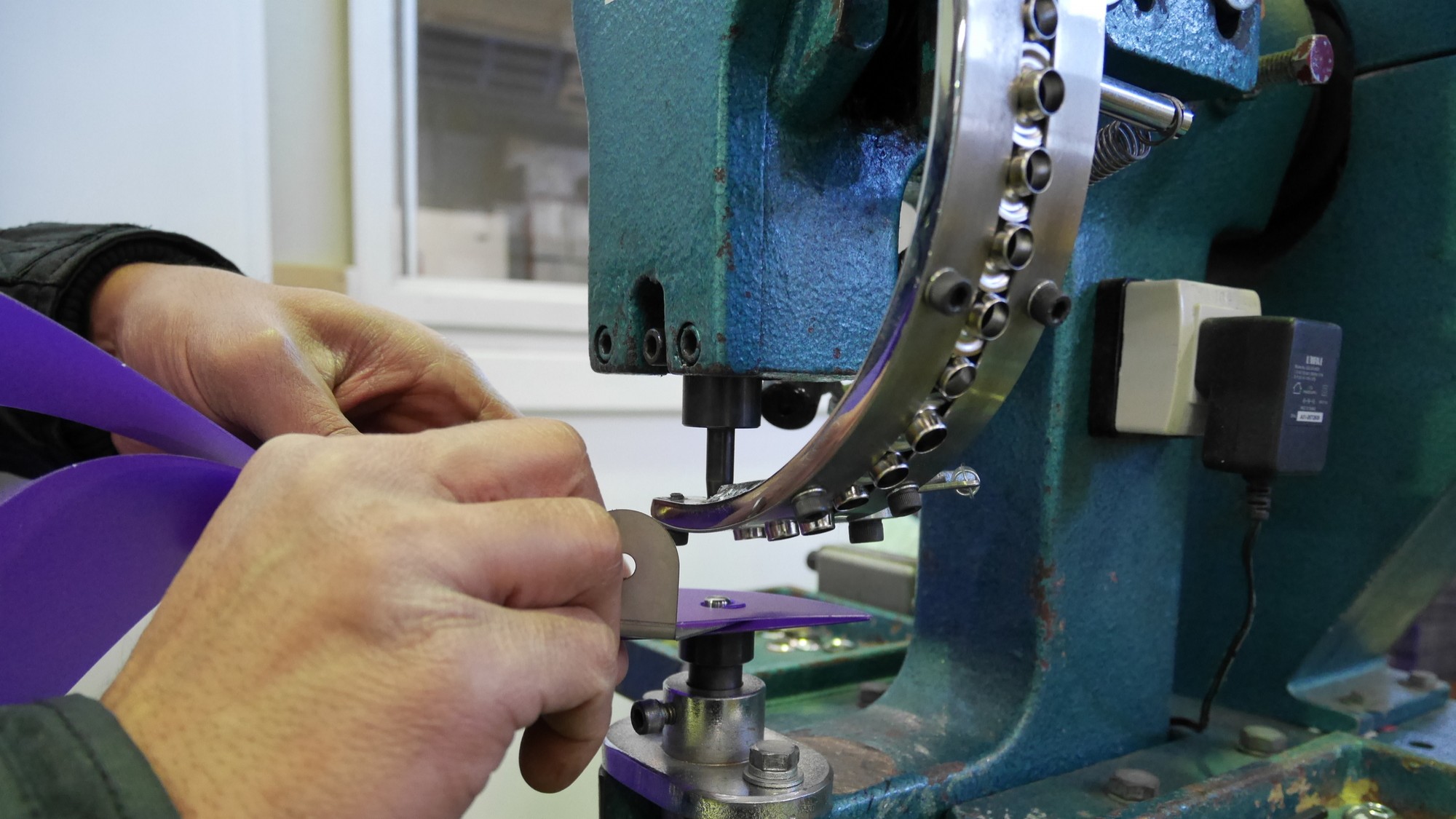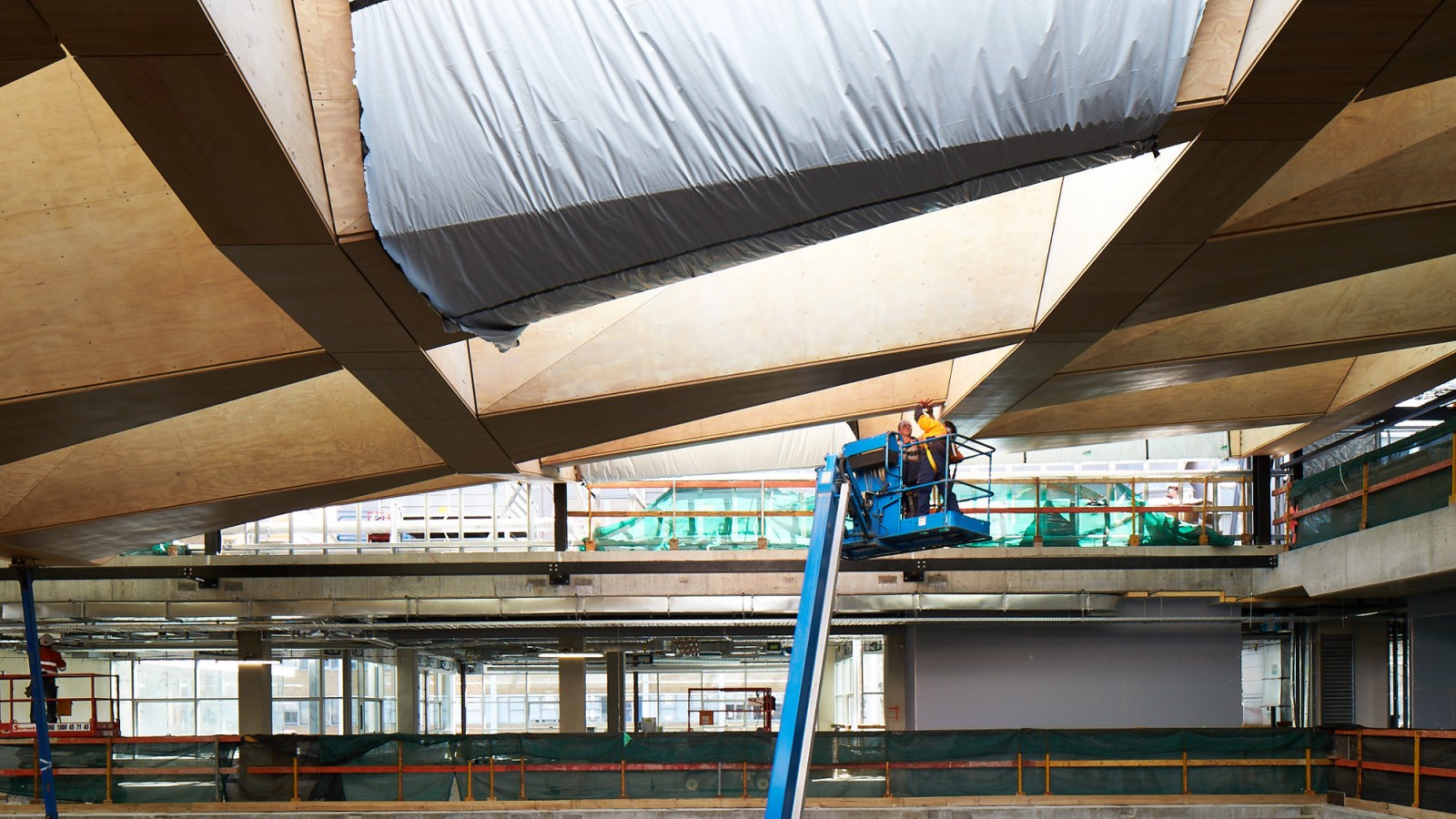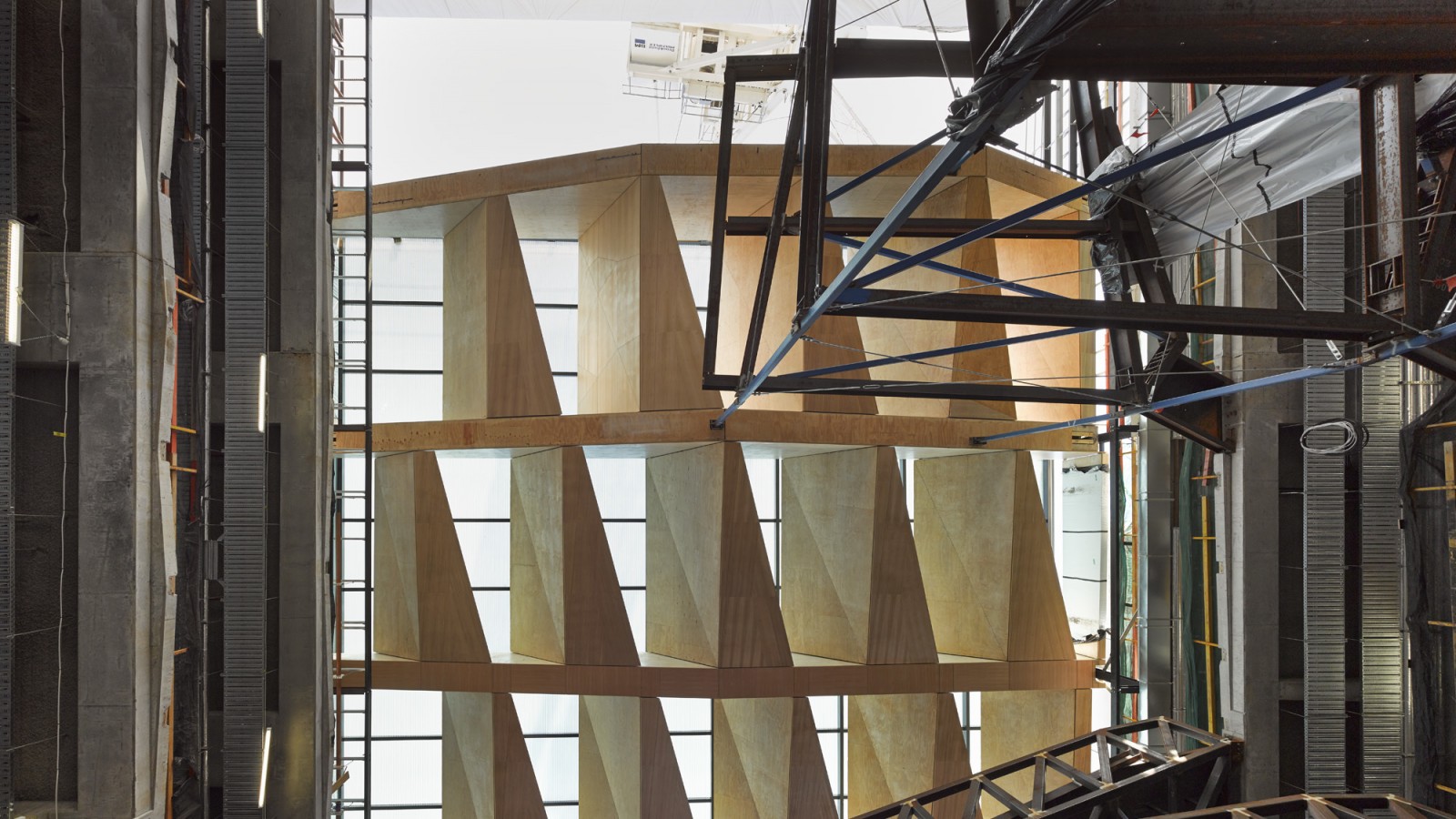Fabrication of a building now occurs in many more places than just the construction site itself. Pre-fabrication, often in modules or repeated components, allows for greater precision and speed (through control over variables like the weather). If we were to map where the key components of our recent buildings were constructed, their locations would be many and varied. From specialised factories to temporary construction hangers, they make up the contemporary dispersed building site.
Whilst much of this is standard building practice now – imported curtain wall facades, precast concrete panels from across the state’s border, and kitchen units from the joiner’s local factory – we seek moments where the qualities of craft shift from small scale to large scale, or from the single piece to the repeated element. Craft that exhibits extraordinary skill and the hand of the maker can be present in the factory as much as on site, and can be embedded in the prefabricated component (hand or machine-made).
Our early explorations in the craft of a manufactured element included fibreglass balustrade panels fabricated by a surfboard maker – an old acquaintance of John Wardle’s. Through a prototyping process we were able to decide upon a fixing, thickness, finish and profile that suited this application.
